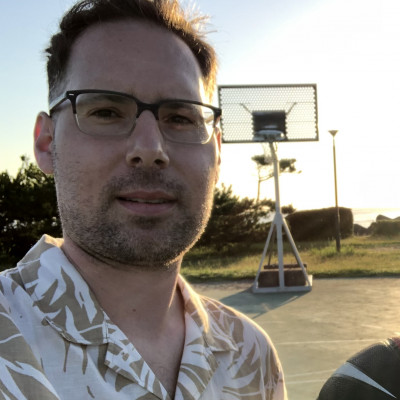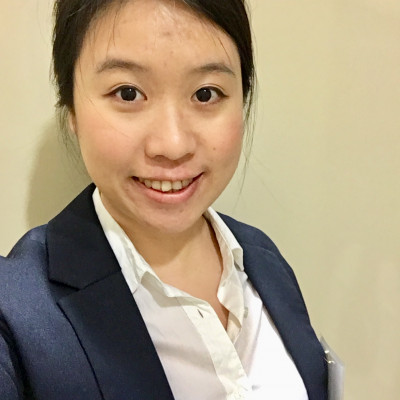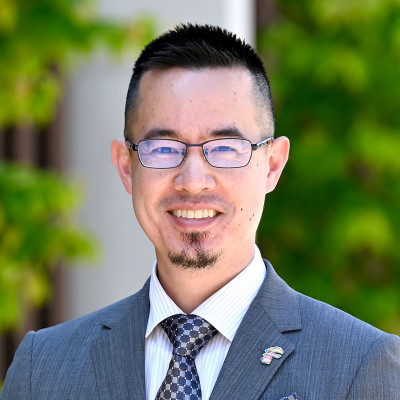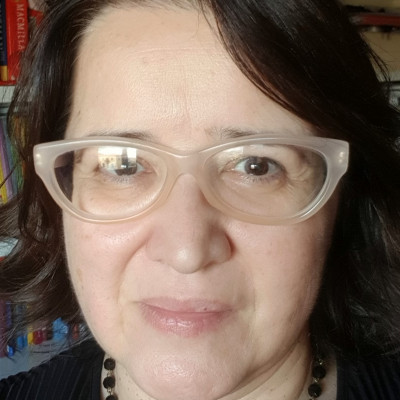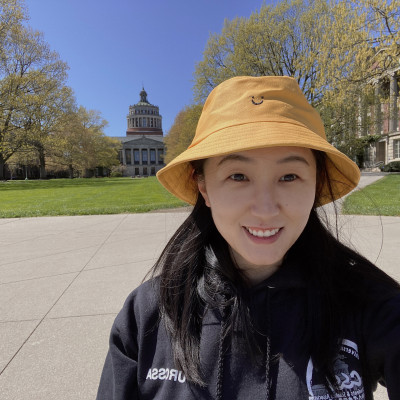Sessions / Paper Presentation
Effective Online Measurement of Student Learning Outcomes during the Covid-19 Pandemic #1442
The Covid-19 pandemic has significantly impacted teaching, learning and testing. Student Learning Outcomes (SLO) are no longer assessed through the measurement of achievement in regular (on campus) exams. Research in this field has been so far oriented towards the online teaching methods and assessment but little has been done so far on the review of the SLO measurement methods. The traditional approach to the measurement of learning outcomes has mainly been based on the test-based measures including grades to assess the achievement of generic skills or disciplinary skills and competencies. A review of SLO measurement methods has become a necessity in order to ensure accuracy and efficiency. Taking into account insights from research on online teaching and assessment, we propose an alternative SLO measurement model that unites self-reported measures such as surveys with test-based measures (grades) to ensures more accuracy and efficiency in the measurement of student learning outcomes of online classes. We discuss the implications of this new approach to online teaching and assessment and illustrate how this combined approach might be implemented in the measurement of on line classes SLOs.
Learning to learn digitally: Teaching learner autonomy to better navigate remote and mobile learning #1474
Teaching students the skills to become confident independent learners has emerged as a requisite ability to assure success in online and mobile learning. Many students lack the training, experience and knowledge to learn autonomously and know surprisingly little about the language-learning resources available to autonomous language learners. Furthermore, learner autonomy is a concept many students are uncomfortable with as they are dependent on face-to-face learning with the guidance and supervision of an instructor. This has limited student success in the remote learning that has been forced upon them in the past year. Consequently, it has become imperative that students have the knowledge and skills to learn independently.
In this presentation, learner autonomy is presented as a teachable concept in the classroom that will help students learn better on their own away from teacher guidance and a skill they can use for lifelong learning. Such topics as learning to learn autonomously, degrees of learner autonomy, types of learners and learning styles, defining teacher-student roles related to autonomy and cultural expectations in the classroom will be discussed. Key elements of learner autonomy will be introduced as well as empirical research that assessed the effectiveness of teaching students to become more capable independent online and mobile learners. Participants will come away with a better understanding of how to empower student independence, practical examples of how students have become better autonomous learners, sites and applications for independent online and mobile learning and how remote and mobile learning will inform teaching in the future.
The impact of COVID-19 on self-access support: The precarious transition to online language learning advising #1495
Since the outbreak of Covid-19 in early 2020, Japanese higher education has had to come to terms with finding optimal online solutions for providing and continuing the education of university students. One of the facilities naturally caught up in this has been self-access learning centres (SALCs). With language learning advising being a key service such centres offer, it has been requisite for those working in them to make the transition from face-to-face to some kind of online distance support for students. Moreover, as non-teaching staff are said to be most vulnerable to position reductions given possible financial cuts arising from tuition fee cancellations or student enrolment reductions, there has been increased pressure to justify what they do as critical to the continuity of learning (UNESCO, 2020). These circumstances have indeed had a direct impact on how such self-access staff advise learners and inevitably changed the nature of their work. Consequently, this presentation reports on a qualitative exploratory study undertaken with one self-access manager at a Japanese university who was purposively selected to examine this issue. Semi-structured interviews and subsequent thematic analysis showed that making the transition to online language learning advising has been challenging for this individual with continuous pressure to demonstrate innovation and the necessity of his position.
Maximizing the podcast: Building receptive and productive vocabulary skills with each episode #1499
The purpose of this presentation is to share findings related to the use of podcasts to build vocabulary retention and production skills while promoting speaking confidence in English language learners. First, studies on previous applications of podcasting in language acquisition and the effects of such uses on the development of students’ skills are explored. The presenter will then detail the way podcasts are used in each lesson to maximize retention of the vocabulary phrases and their use by providing a sample of the flow of each lesson. There will be a demonstration of how to use the mobile podcasting app to allow collaboration during remote teaching. In addition, participants will hear a sample of an episode from the student-produced weekly podcast, which is based on conversation topics presented through a teacher-selected ESL podcast. In each student-produced episode, students summarize the contents of that week’s podcast and then personalize the material by sharing their opinions or experiences pertaining to the situations presented in each episode. Subsequently, the affective measure of confidence and the increased use of new vocabulary phrases are investigated by analyzing student podcast content and sharing questionnaire results. Participants are members of an advanced Conversation & Listening class as part of a 14-week academic Continuing Education IEP (Intensive English Program). They are part of 2 intact classes of 13 students total, whose ages range from 22 to 48 with a median age of 35. The class is comprised of 10 females and 3 males, and the majority of them have studied English for 2 years or less. However about 20% of them have studied English for 5 to 7 years. They are currently studying at the highest level at Long Island University in the US, which is B2 and C1.
Attendees will come away with a solid methodology for using podcasts as a main teaching tool in their classrooms, including a worksheet sample and suggestions for appropriate podcasts for English Language Learners. They will also understand how to use a particular podcasting app.
The effects of gamified instruction on Japanese English language learner vocabulary recall #1422
In this study, the effects of web-based, gamified vocabulary instruction (through Quizlet’s Match activity and online leaderboards) on assessment scores and student motivation are examined. The primary features of gamification present in this study include ‘conditions for victory’ and leaderboards. Japanese English language learners from two online Listening and Speaking courses at Kyushu Sangyo University took part in this experimental study. The control and experimental groups initially received identical vocabulary instruction, and in week 8, both classes took a vocabulary recall assessment (75 words). Afterwards, gamified vocabulary instruction (via the Quizlet application’s Match game) was introduced only to Class B (the experimental group). At the end of the semester, a second vocabulary recall assessment was administered to both classes (75 new words). Previous studies have claimed that gamified instruction increases a learner’s motivation to (a) study a second language and (b) study second language vocabulary. Results of the final assessment indicate that gamified vocabulary instruction through Quizlet’s competitive Match game and the use of a public leaderboard have a positive effect on vocabulary assessment scores. However, quantitative student feedback from this study suggests this manner of gamified instruction may not affect Japanese English Language Learner’s (ELL) motivation to study English or English vocabulary.
A systematic review of 50 years of automated question generation research #1432
Questions play a fundamental role in education. Although constructing questions has been, and is generally conceived of as, a manual process, Automated Question Generation (AQG) is a burgeoning area of Intelligent CALL (Underwood, 1989) formed from a synergy of research strengths from Artificial Intelligence and Natural Language Processing. Over the past 25 years of CALL research, AQG has been used to supplement educational activities (e.g., answering practice questions) in large-scale courses (e.g., MOOCs) and advance computer assisted language testing (e.g., adaptive testing).
This presentation will first offer an overview of the AQG research across language learning and assessment studies that covers six key dimensions: 1) knowledge source for question generation (e.g., ontology, text), 2) generation method (e.g., template, syntax), 3) question type (e.g., WH-factual, cloze), 4) response format (e.g., open-ended, multichoice), reliability check (e.g., correlation with external exam scores) and 6) evaluation (e.g., expert, student). The primary aims of the presentation are to provide an overview of the AQG research as related to language learning and to discuss with the audience the benefits and drawbacks of using automated generated questions for classroom activities and assessments.
Dealing with academic dishonesty in the digital age #1433
Ubiquitous access to the Internet has revolutionized every aspect of language education. Students are now able to use various digital systems to improve their vocabulary knowledge, reading ability, grammar, and even pronunciation, often with just an app on their smartphone. However, the downside of digital technology is that it also enables unscrupulous students to find novel ways to cheat. Common methods of cheating by students include the use of translation software, Line groups in which students share answers with each other, and even purchasing answers from online marketplaces. In this session, the presenters will discuss a specific incident in which over 1400 students from 90 institutions in Japan were caught cheating on Xreading, a popular online platform for extensive reading. They will explain how the cheating was discovered, and the surprisingly wide range of reactions from academic institutions after they were informed about their students’ misbehavior. Finally, based on their experience, the presenters will provide useful tips to minimize cheating, detect cheaters, and the most effective ways to deal with students who have been caught cheating.
Examining types of task engagement through social interactions by low and high proficiency level EFL learners #1443
There has been a broad expansion of the use of social interaction to help provide environments for discussions among learners in recent years. This work has attracted a great deal of attention from researchers (e.g., Garrison, Cleveland-Innes & Fung, 2010; Meskill, 2013; Lai, Yeung & Hu, 2016; Lin, Warschauer & Blake, 2016; Peeters, 2018). There are an increasing number of studies suggesting that such social interaction outside of class appears to provide many of the conditions necessary for fostering learning (Lomicka & Lord, 2016), not the least of which is establishing a supporting platform from the teacher and peers. While there are several studies that have started to explore this potential in language learning contexts (e.g., Álvarez Valencia, 2016), results thus far have been rather mixed, with learners showing positive attitudes but limited interaction (Tran, 2016, 2018). A variety of studies have been investigated in order to figure out how to develop learner’s engagement by not only providing learner training (Stockwell & Hubbard, 2014), but also providing suitable tasks (Ellis & Shintari, 2014), or providing peer interactions as well (Philp & Duchesne, 2016). The current study investigates the types of task engagement reflected through activities done through social interactions by low and high proficiency level EFL learners. The means of technology tools is Line App in Japan. Also, the students will share Google Docs for group work. The study was carried with 31 beginner learners and 22 intermediate learners of English at a private university in Tokyo over a 14-week period. The results are discussed in terms of how cognitive, behavioural, social, and emotional dimensions of engagement expressed through the ways students participated in the social interaction.
Summary: The study investigates the types of task engagement reflected through activities done through social interactions by low and high proficiency level EFL learners in terms of how cognitive, behavioural, social, and emotional dimensions of engagement expressed through the ways students participated in the social interaction.
Active stakeholder perspectives on the internal- and external-alignment of a first year EGAP writing course #1401
This practical, ongoing research project represents an initial inquiry into an intact required first-year once-a-week English-Mediated Instruction (EMI) English for General Academic Purposes writing (EGAP-W) course, focusing on the perspectives of the active stakeholders (i.e., students and teachers) on the perceived degree of constructive alignment (CA) at both course and curriculum level. As CA incorporates a range of rugged-yet-reliable educational theories, chief among them the learning context and processes, student approaches to learning, and curriculum development, this project investigates the representations of the educational system in which the stakeholders are operating. A convergent mixed-methods approach incorporated both quantitative (n = 397) and quantitative (n = 5) data from enrolled student-participants as well as qualitative data from semi-structured interviews with EGAP-W instructors (n = 6) in order to gain deeper insight into stakeholders’ perspectives. Initial results suggest that while course-internal alignment is perceived by the stakeholders as being relatively high, with students acknowledging the relevance of taught skills, course-external alignment is perceived as weak. In addition, secondary implications of note for both curriculum development and EMI were revealed. It is hoped that results and procedures from this study could provide a basis for instructor-stakeholders to help create more effective course-external connections between courses in extant curriculums, and to better align their course systems to the needs of their student-stakeholders as technology continues to influence educational institutions across society.
The isiZulu hospital web-based learning project #1426
Remote online teaching has been a game-changer in the language teaching spectrum. In the case of the teaching and learning of isiZulu (one of the official language in South Africa), remote online teaching has created an opportunity to explore web-based learning (WBL) with medical students to improve their clinical communication skills. The problem addressed in this project is the need to enhance isiZulu clinical communication. The need for further integration of isiZulu within the 6-year health sciences curriculum is essential. Creating an isiZulu language website paired with the Skills Lab content offers a practical and economical solution, especially with no face-to-face teaching during the clinical years and building on the year-long module completed in MBCHB (Bachelor of Medicine and Bachelor of Surgery) Year 1 programme. This poster presentation describes a work-in-progress, web-based project undertaken at the Nelson R Mandela School of Medicine, University of KwaZulu-Natal (UKZN). This project aims to help students sustain their isiZulu learning and foster autonomous learning throughout the programme. Through WBL, students can interact with the content irrespective of their location and schedule. The content can be perpetually updated and designed interactively. It is essential to provide students with authentic and relevant learning resources based on principled second language (L2) learning theories to enhance their isiZulu clinical communication skills. Using WBL, rich, authentic input such as simulations and game-based environments can also be explored. Given the limited research conducted in TBLT and CALL in isiZulu, this study significantly contributes to the existing TBLT-CALL scholarship.
Transitions and connections: student reflections on emergency remote teaching and learning (ERTL) in 2020 #1396
The Covid-19 pandemic of 2020 transformed the educational spaces and lives of teachers and students worldwide. According to UNESCO (2020), over one and a half billion students around the world were learning remotely in March 2020 due to pandemic concerns. First-year university students in Japan were particularly affected by this, moving from high school to university during this period, and therefore facing multiple challenges. This presentation explores the results of an investigation using videos made by students to record this pivotal time. The participants were asked to create three-minute videos in which they reflected on their experiences of ERTL. The videos were uploaded to the university LMS and permission received for use. They were then analyzed, revealing a continuum of participation, engagement and success. The students were found to own the necessary technology to engage in online learning, negating concerns about a possible digital divide. Significant gaps were revealed, however, in the frequency of use and experience of technology, especially in academic contexts. This led to technostress which was compounded by a lack of technical support. Additionally, strong feelings of disconnection, isolation and lack of community were expressed. Positive aspects of ERTL reported include increased flexibility in terms of time, place, and pace of learning, which contribute to more inclusive learning spaces and increased student control of their learning environments. The students’ insights provide vital information about what is needed to participate and succeed in online educational environments, and implications for education moving forward will be discussed.
UNESCO (2020) https://en.unesco.org/news/unesco-rallies-international-organizations-civil-society-and-private-sector-partners-broad
A Vocabulary Acquisition Method for when Learner Access to Technology Varies #1403
This presentation will discuss the Goldlist vocabulary acquisition method as part of a course in a fully online situation where students have varying levels of technology available to them. How to use the Goldlist method of vocabulary listing and spaced reviews will be described as well as research regarding its effectiveness as a language learning methodology. Research suggests that this method of language learning promotes learner motivation through comprehensible input via natural language materials, use of chunks and collocations, and self-directed study, yet as vocabulary lists are reviewed multiple times, it can become time consuming and affect motivation. Regarding online learning, this method fit the learner’s situation as on-demand courses were to be designed for learners who only had access to online courses via smartphones as well as students who were using computers. Learners were asked to complete their study tasks preferably offline and to upload the results. Implementation will be discussed as this method can be implemented on any learning management system. In brief, self-reported results from student course surveys indicate that on average learners made 21 lists of 15 to 20 new words to increase their vocabularies by over 350 words in 8 weeks. Learning was reported by 88% or learners and pleasure was reported by 63% of respondents. One drawback is that due to the on-demand nature of the course, student output was limited, and students did not get the amount of spoken production time (time for acquisition) that a face-to-face or an on-time course would allow for.
Data-driven Learning (DDL): The Analysis of Corpus Tools’ Designs to Facilitate EFL Learners' Error Correction #1412
Research has shown that corpus tools can facilitate non-native speakers of English, including English as a second (ESL) and foreign language learners (EFL), in their grammatical choices when using data-driven learning (DDL). Gigantic corpora and user-friendly interface are two features that were found to facilitate English learners to use corpus tools for DDL (Boisson et al., 2013). Netspeak and Linggle are two corpus tools with similar interfaces and functions that are designed with the two key features mentioned above. However, each corpus tool is designed to target different users and could further affect the data-driven learning experiences. Thus, this study analyzed how Netspeak and Linggle facilitated four college EFL learners to correct ten common types of grammatical error through data-driven learning. Searching logs and interview data were collected and analyzed to understand how learners consulted with the two corpus tools for data-driven learning. Findings showed that the affordances of the two corpus tools, particularly the operators and the interface design, led to various data-driven learning strategies for error correction, such as replacing word choices and using multiple operators. Pedagogical implications of ways to facilitate EFL learners to use corpus tools for data-driven learning will be further addressed.
Second language acquisition doctoral students’ perceptions of a collaborative digital storytelling project #1488
Research indicates digital storytelling (DS) projects have multiple beneficial uses in language teacher education and teacher education in general. These include the development of teacher knowledge and skills (e.g., target language, pedagogical practices, educational technology [ET]), reflection on and sharing personal experiences, identity work, and the exploration of sociocultural or sociopolitical issues. However, while some teacher educators and researchers may have an interest in employing DS projects for purposes such as these, understanding how education majors perceive these multimodal projects may help improve their design and implementation. With this in mind, I explored the DS-related experiences and perceptions of international SLA doctoral students who had engaged in a collaborative DS project in a course on the use of ET in second/foreign language (L2) education. The imagined audiences of their DS were L2 teachers engaged in professional development, and the purpose of their DS was to promote the use of different types of ET in L2 education. Thematic analysis of a digital survey, semi-structured interviews, and posts in the course’s online discussion forum indicated the participants believed the DS project was enjoyable and motivational, and resulted in multiple learning outcomes, including improvement of the participants’ knowledge of ET. Some participants also stated they had learned a new type of learning activity (i.e., DS) to employ with their future students. Challenges the participants faced included employing unfamiliar technology, acquiring resources to create quality digital stories, and coordinating efforts with group mates. Implications for language teacher education practice and research are discussed.
Evaluation of an Integrated English Skill Course Offered Online Using Can-do Adapted from CEFR Companion Volume #1406
Teaching English classes online due to the pandemic of Covid-19 was unprecedented; however, it will be one possible norm in future English education. The benefits of using an online meeting tool such as ZOOM are reported (Cheung, 2021). The presenter offered an integrated English skill course for English major university students online using ZOOM last year, set the course objective to be able to use English as a tool for global communication (Saito, 2017), and taught the course reflecting the concept of mediation emphasized in the CEFR Companion Volume (Council of Europe, 2018). In this presentation, I will present how I conducted the course online for students to improve meditation skills and to be able to use an online meeting tool, ZOOM, and developed a questionnaire with reference to Can-do descriptors of meditation, online conversation, and discussion, and goal-oriented online transactions and collaboration. Reflecting on the questionnaire results, I will discuss whether Can-do descriptors of meditation, online conversation and discussion, and goal-oriented online transactions and collaboration can be useful for evaluating a course offered online. Pedagogical suggestions about how Can-do descriptors of the latest CEFR Companion Volume (Council of Europe, 2020) can be used to help students acquire mediation skills and use an online meeting tool which will be necessary skills to use English as a tool for global communication in the post Covid-19 period are also offered.
Minecraft as an immersive language teaching world: English teachers’ TPACK #1459
Since schooling has been affected by the pandemic, educators are beginning to be more open to distance learning and might become more open to immersive virtual worlds, such as Minecraft (Cleave & Geijsman, 2020; Egbert, 2020). However, in order to integrate new technology into their practice, teachers need to be provided with training that promotes the development of their Technological Pedagogical Content Knowledge (TPACK) (Koehler & Mishra, 2009). This study identifies the level of TPACK teachers need to integrate Minecraft English teaching by investigating twenty-nine elementary school English teachers who created Minecraft English lessons after receiving Minecraft professional development for 16 hours in two months. A Minecraft TPACK instrument for English teachers was developed based on Schmidt et al. (2009) and Bagheri (2020) and administered before and after the training. Five Minecraft English lessons were created as a result of the training. The results showed an overall improvement in Minecraft TPACK scores. The English teacher’s Minecraft content knowledge gained from M=1.98 to M=3.79, Minecraft Technological Pedagogical Knowledge gained from M= 1.86 to M=3.6, and the TPACK mean score gained from M=2.5 to M=3.93, indicating that they are more knowledgeable of how to teach English through Minecraft. In the presentation, the results of the study will be discussed with a focus on an analysis of the content, technology, and pedagogy incorporated in the Minecraft in-world lessons and supplementary materials using Kahoot, Bamboozle, and Nearpod that the English teachers have created. Also, the merits, affordances, and challenges for teachers to integrate Minecraft as a language teaching environment will be discussed.
Teaching speaking online using digital mind mapping software (DMMS) and screen recording tool (SRT): A best practice from a CALL perspective #1464
Teaching English online during the pandemic calls for innovative technological and pedagogical approaches to shape a meaning-making practice of learning. This session presents a best practice of how Digital Mind Mapping Software (DMMS) and Screen Recording Tools (SRTs) are brought together to support the student online speaking practice. The study conducted a Project-Based Learning (PBL) through Online Community of Practice (OCoP) involving twenty students (five groups of four) of the business administration department. The process went through six consecutive stages, they are 1) identifying the challenging problems, 2) planning the project, 3) scheduling the project, 4) monitoring the progress of the project, 5) assessing the outcome, and 6) evaluating the project and giving feedback to students. The PBL logbook and student-created videos were collected and analyzed using the assessment rubrics. The findings show that the project outcomes were considered satisfying and effective in supporting the student’s online speaking practice. It also encouraged them to be more active, autonomous, collaborative, and explorative. The study also suggests that teaching speaking online should consider adopting the technology-based project learning approach to facilitate the students with a collaborative learning environment.
Japanese University Student Attitudes and Engagement with an online Flipped Learning Approach #1421
Flipped or blended learning has grown in popularity recently with its focus on student-centred learning and its use of technology. The current study introduced a flipped learning approach in combination with synchronous online classes at a Japanese university during the COVID-19 pandemic. 106 first-year students who were taking a mandatory English discussion course participated in the study. Students appeared to view flipped learning favourably, the main advantages noted were that they felt well-prepared for classes, perceived improvements in their English abilities and valued the increased chances for interaction. A range of different methods of interaction were used in the course and student attitudes towards these will be discussed along with possible pedagogical implications. Additionally, many students perceived improvements in their ability to self-regulate their learning. However, a decline in engagement with flipped learning materials was seen as the course progressed. Whilst engagement declined with some materials, there was consistently high engagement with graded materials which suggests incorporating flipped learning tasks into student grades may be one way to ensure students remain engaged. The study offers some support for the trend towards using flipped learning as it has the potential to make Japanese students more active learners yet there is also a need for further research to understand the factors which led some students to be more engaged with the method than others.
The uptake and impact of Clilstore, a Content and Language Integrated Learning dedicated authoring tool and repository #1436
This presentation explores the uptake, impact and use of the Clilstore authoring tool and open access repository of ready-made educational resources for content and language integrated learning. The system has been undergoing constant development since its inception during the “TOOLS for CLIL Teachers” project and is currently undergoing extensive improvements by virtue of the “CLIL Open Online Learning” project. Both projects were co-funded by the European Commission. The analysis is based on the data obtained from a survey administered to registered users. A cross-section of educational practitioners who had registered with Clilstore was invited to provide feedback on a range of factors relating to the platform's functionality and the impact it had made to their professional practice. There were 61 responses with a sectoral breakdown of Secondary = 36%; HE = 28%; FE = 27%; Other (Primary, Community) = 9%. The authors will discuss the findings according to five broad categories: uptake, exploitation, uniqueness, innovation, and awareness. To conclude they will illustrate the system and highlight its potential benefits for both autonomous and guided learning.
Taking it from task: determining learners’ technological needs #1455
Task-based language teaching (TBLT) is an approach to language education that focuses on meaning through the use of different tasks. In recent years, TBLT has expanded into the medium of online learning through the concept of “technology-mediated TBLT” (Gonzalez-Lloret & Ortega 2014). One essential feature of both TBLT and technology-mediated TBLT is the use of a needs analysis. While needs analyses are typically concerned with the needs of the students related to the tasks, they can also be used to find out what technologies the learners have experience with or would like to learn. Most importantly, needs analyses can explore what technologies the learners would like to engage with that may be beneficial to their future outside of the classroom. In this study, a needs analysis was carried out with university English language learners (n=168) at a large private university in Japan to find out what are the perceived technological needs of the learners. A short bilingual six-question needs analysis was administered online in the first week of class exploring the student's self-reported technological needs in general English classes, other classes, and their futures outside of the university. This presentation will describe the formation of the needs analysis, implementation, and findings that may offer insight into the technologies teachers select in their own curriculum compared to the expectations and needs of their students. In addition, suggestions for how English teachers can better incorporate the students' technological needs will be discussed.
Concurrent use of mobile assisted language learning and communicative classroom practices #1470
This paper presents a mixed-methods approach to researching the viability of supplementing mobile-assisted language learning (MALL) apps focusing on receptive skills with a course curriculum that emphasizes meaningful communication, mitigation of error-aversion tendencies, cultural awareness, and presentation skills. Kim & Kwon (2012) and Burston (2014b) have lamented the fact that most MALL applications do not take full advantage of technological affordances to create opportunities for learners to use their devices as tools of interaction. Instead, apps that focus on receptive skills including vocabulary memorization and grammatical rules are more popular. Using Rosell-Aguilar’s (2017) framework for the evaluation of language learning applications, we can determine that many modern apps are not interactive, engaging, or able to fulfill the pedagogical potential of our current level of technology. This paper acknowledges that creating more apps focusing on productive skills is necessary but focuses on how to create a robust curriculum surrounding such receptive-skills apps. Learners improved as shown by standardized test scores, learner reflection, and surveys. Adult language learners working for a company were assigned 50 units of the online mobile assisted language learning application, ReallyEnglish, while concurrently taking weekly hourlong lessons that focused on meaningful communication, mitigation of error-aversion tendencies, cultural awareness, and presentation skills. Learner growth was measured by TOEIC Tests, observed classroom performance, and post-treatment surveys. Learners were given pre- and post-treatment TOEIC tests. A paired sample t-test showed significant improvement. Post-treatment surveys also revealed that learners felt much more confident and comfortable communicating in English.
Smartphone writing fluency: The case of Saudi EFL students #1490
The process of writing has undergone a fundamental shift in the past few decades with the proliferation of smartphones, which required the advent of an entirely new system of input, distinct from both handwriting and keyboard-based typing. This input method, tapping, has largely been ignored by cognitive researchers to date, perhaps due to the misconception that tapping is synonymous with typing. The current study follows precursor research which investigated writing fluency (i.e., transcription speed) on smartphones. A total of 150 Saudi EFL students engaged in transcription tasks in their L1 (Arabic), or an L2 (English), either on smartphone or by hand. Their times-on-task were compared, showing slower times for writing on smartphones for both groups. However, these differences only reached statistical significance under the L2 condition. Qualitative surveys revealed that students felt the benefits of smartphones (e.g., spellcheck, ease of storage/transmission) outweighed their apparent drawbacks (e.g., smaller sizes, slower speeds). Many students commented on their beliefs that both schools and students needed to adapt to modern times and become better at incorporating smartphones into classwork. Implications for language teachers and learners, particularly under remote learning conditions, and qualitative responses will be discussed.
Informal foreign language learning through subscription video streaming #1420
The use of video streaming has exploded over the past several years, in part, due to the ubiquity of smartphones and advancements to mobile network technology. However, while the topic of video for second (L2) learning has been studied extensively in CALL research, the use of video streaming for out-of-class, informal foreign language (FL) learning has received little attention. This presentation details a study that addressed this gap in the literature. Specifically, the study examined Japanese English as a foreign language (EFL) students’ practices and views concerning the use of subscription video streaming services for informal language learning. To this end, a survey was administered to Japanese students at four universities, with a total of 256 participants fully completing the survey. Moreover, 12 of these participants were interviewed to gain deeper insight into their views of subscription video streaming for informal foreign language learning. Results showed that informal language learning through subscription video streaming is a common social practice among the participants and that they had positive perceptions towards using these services for L2 learning. Additional findings and implications from the study will also be discussed in the presentation.
Video conferencing effects on identity and motivation in EFL classrooms #1484
Due to the Coronavirus pandemic, classes in Japan at the university level had moved online and, in some cases, continue to be online in prefectures that are still struggling to lower the levels of the virus in the local populations. The inception of online classes was quick and did not take certain aspects of university life into consideration, such as how important it is to student motivation to have an identity congruent with their own concepts of what a student is. The purpose of this presentation is to review problems of student motivation and identity in video conferencing language courses due to individualization and loss of community. In the presentation, the presenter will first review and explain the problems found in video-conferenced classes such as lack of continual presence in breakout rooms, multimodality and signifying practice in the EAP courses at Akita Prefectural University in the Agri-Business, Agricultural Sciences, and Bio-Technologies department’s first- and second-year students. Second, the presenter will explain the data of 70 of the EAP students from a seven-question, low context, Likert Scale survey on Hofstede’s Collectivism (1980), motivation, and identity. The presenter will then show how the survey data can be applied to the Identity-Based Motivation Theory to explain why a lack of motivation was found in the Akita Prefectural University students during video-conferenced courses. To conclude, the presenter will explain that while motivation in the EAP courses may have declined because student behavior and identity became incongruent during video-conferenced courses, the problem could simply resolve itself through the Hebbian Principle if video conferenced language courses become the “new normal”.
Question Generator: Preliminary evaluation #1469
This presentation describes the preliminary evaluation of the accuracy and usability of a prototype online tool. The Question Generator automatically creates questions from an input sentence. Learners submit any sentence (simple, compound, complex or compound-complex) and select the type or types of questions to be generated. The system can create open-ended, closed-ended and tag questions for any declarative statement. This educational language app is designed to provide unlimited question practice. One way in which it can be used is for learners to create questions for a stimulus sentence (e.g. Tom loves Jane) and then compare their questions with those generated automatically (e.g. Who loves Jane? Who does Tom love?). The web app uses a combination of machine learning and rule-based parsing to select appropriate question words, pronouns and appropriate syntax needed to generate appropriate questions. Initial feedback from focus groups of university, high school and junior high school students was positive. The accuracy rate for sentences randomly extracted from MEXT-approved textbooks was high at approximately gold-standard. The accuracy of the questions is the highest for simple sentences; but as sentence complexity and ambiguity increases, accuracy decreases. Practical suggestions on how to use the app will be given. This open-access tool is developed in-house and is non-commercial.
Junior High School Teacher Attitudes Towards the Adoption of ICT as Part of MEXT's GIGA School Program #1387
My dissertation investigated the introduction of the GIGA School Program into public Junior High Schools in Mihara, Japan. The Program is a major Information and Communication Technology (ICT) initiative, providing computers and internet access for all school students and teachers. The primary purpose of the survey was to ascertain the major attitudes, beliefs, and concerns that Junior High School teachers held towards technology and the use of ICT in the classroom. The survey also sought insight into teachers’ views of themselves and feedback on issues they felt would help or hinder their adoption of ICT in the classroom. The study found that while teachers held overall positive views of the upcoming change, a range of first-order (external) and second-order (internal) barriers to adoption were revealed. Recommendations were provided to address these issues and facilitate the successful introduction of the Program, and some recent first impressions of the initial introduction of the technology will be given.
Digitally-enhanced practices in foreign language teacher education: fostering active learning and student engagement in online learning environments #1404
Since spring 2020, Higher Education Institutions have engaged in extensive online teaching worldwide. In this respect, emergency remote teaching has had a deep impact on the development of post-Covid teaching practices at tertiary level. In this light, while devising digitally-enhanced pedagogical practices suited to the new normal, instructors need to take into account some newly emerged dimensions, such as flexibility, a pedagogy of care, and collaborative learning (Bozkurt et al. 2020). As a result, in post-pandemic educational contexts, digitally-enhanced pedagogical practices need to be reframed to provide students with flexible learning implemented from a pedagogy of care perspective (Jackson 2021). Online courses thus need to be redesigned to foster student engagement, student agency, collaborative learning, and critical thinking. In this perspective, this presentation aims to illustrate how transformative learning practices have been successfully implemented, from a pedagogy of care perspective, in an online foreign language teacher education course offered at an Italian university in the present academic year. To this purpose, the analysis of learners’ perceptions collected in the course, showing a high degree of student engagement, student agency, collaborative learning, and critical thinking, will be examined. In the course, implemented within a socio-constructivist theoretical framework (Selwyn 2016), learners have engaged in various digitally-enhanced activities devised in keeping with a design for learning approach, fostering students’ active learning and agency (Goodyear 2015; Rapanta et al. 2020). This presentation may be especially useful to instructors planning to develop highly engaging digitally-enhanced foreign language teacher development in post-pandemic educational contexts.
Enhancing formative feedback in online academic writing classes using personalized screencasts #1424
This presentation will describe the findings of a recently completed exploratory study that examined the effectiveness of using screencast feedback to improve the essay revision process of students’ writing in an undergraduate academic writing course. Participants (N=20) were tasked with completing and revising two 1500-word essays during a 15-week course. While the writing tasks for all participants were the same, the type of feedback they received depended on whether they were in the control or experimental group. In the control group (N=12), participants were given ‘traditional’ written feedback on their essays where the instructor made annotations, comments, and suggestions on a Microsoft Word document. In the experimental group (N=8), participants received feedback in the form of a screencast video which included audio comments and suggestions for revising problematic aspects of the essays. The revised essays were then analyzed to compare whether the type of feedback had an effect on the quality of revision and whether students engaged in self-correction. The results showed that participants who received screencast feedback evaluated it more positively than written feedback, completed a higher percentage of revisions, and engaged in more instances of self-correction. Further findings indicated that this multimodal approach to providing feedback helped build a rapport between the teacher and students which led to increased motivation and task engagement. This presentation will be of particular interest to educators looking for an innovative approach to providing personalized, formative feedback using screencasts in face-to-face or online learning environments.
Distance learning in 2020: A report card for one institution's response to the COVID-19 pandemic #1471
This research study investigates the response of one institution to the COVID-19 pandemic, located in a region outside of the Kinki and Kanto regions, through a mixed methods approach incorporating both survey and interview data. During the 2020 school year in Japan, many institutions were blindsided by the sudden need for distance learning to respond to the COVID-19 pandemic, which provided a safer alternative to face to face (f2f) classes, and a much more desirable response than suspending classes indefinitely. However, this shift to distance learning has brought challenges for instructors and students concerning the implementation of lessons, the responses of students and their performance, and the support of their institutions. This study explores the perceptions of university educators of the response of their educational institution, the response of their students, and future directions in regards to classroom instruction and technology usage in the classroom through a survey and a handful of interviews with participating faculty members. The results of the study show the ways instructors met student needs, common issues in implementation such as use of in-house LMSs and adapting group activities to the online classroom, and calls for a greater need for resources that can support faculty members in preparing, designing, and conducting online courses, as well as provides discussion on ways to implement active learning in online language instruction.
Measuring the Effects of Cooperative Learning on EFL Students’ Acquisition of High-Frequency Vocabulary #1393
Research shows TGT Cooperative Learning fosters interpersonal relations that motivate higher academic achievement regardless of learners’ abilities and aptitudes. TGT stands for Teams Games Tournaments. A mid-2019 study quantified the net effects of an online Team Challenge vocabulary tournament among 4,001 first-year EFL students in 123 classes at six universities. All students used the same self-study vocabulary app over the same time period. 2,001 students participated in a Team Challenge tournament and 2,000 did not. Pre and post tests show students on teams learned and retained an average 48% more words than students studying alone. As one teacher wrote, “My students learn thousands of words with the app but the Team Challenge transformed the experience from self study to a team effort where students pull together and motivate each other.” Details about the study approach; methods, outcomes, and opportunities for teachers are outlined in this report. Teachers will learn how to organize teams of learners to participate in free Team Challenge vocabulary tournament. Students who participate can be expected to learn from 1,000 to 3,000 new words during a tournament. Teachers can use the information in this report to conduct their own cooperative learning tournaments with any educational apps that are capable of supporting such an event. Few EFL teaching professionals are familiar with TGT Cooperative Learning and therefore further studies about team-based cooperative learning experiences are suitable and appropriate for publication in journals and school and community news sites.
Perspectives of Online Learning at a Saturday Chinese School in America #1456
Saturday language schools in America play an important role in supporting language education and community cultural diversity. While most Saturday language schools were previously face-to-face classes, the Covid-19 pandemic has been an obstacle to traditional learning and teaching. Taking safety into consideration, many schools have moved their activities online. This study was designed to hear different voices from students, teachers, and parents on online language learning from a Saturday Chinese school in New York state. This was a mixed-method study. An online survey was distributed by the school principal to the whole Chinese school community, including students, parents, and teachers. The survey asked participants to evaluate the online learning experiences and learning outcomes. Based on the survey answers, 4 students, 2 parents, and 1 teacher volunteered for the follow-up interview. Grounded theory was used to analyze the collected data. Results found that the language proficiency of students improved to some degree over the semester of online learning, but students preferred to have classes in a traditional classroom setting, where they could interact with classmates and teachers more. Teachers and parents agreed that they should have classes virtually during the pandemic, but they suggested the Saturday school arrange workshops to prepare teachers, students, and parents for virtual classes. Some participants explained that they dropped Saturday Chinese school because there were fewer program activities than before, such as student competitions and festival celebrations. This feedback indicates that this Saturday school efficaciously promoted Chinese culture in the Rochester area before the pandemic, which helped to attract students to study with them. All in all, this study attempts to offer suggestions to Saturday language schools in America, and to enlarge the database of studies on online language learning.
Do Kahoot games enhance vocabulary learning? #1478
Nowadays, many educators are considering using online games for learning vocabulary. Among the existing online games, one of them is Kahoot. The purpose of this study is to find out if male students and female students learn vocabulary the same way by using Kahoot games. The study looked at whether there is any significant difference among the female and the male groups in their vocabulary enhancement? This was a quantitative research study with a comparative design using pre-test and post-test. This research was carried out on a sample size of 68 7th-grade students. There were 33 female and 35 male students. Vocabulary tests were administered to both groups by utilizing a pre-test and post-test. The content of the lessons learned for female and male students was the same. The findings revealed that there was a significant difference in vocabulary enhancement between female and male students using Kahoot games (based on the t-test analysis): the mean difference from both groups is 0.006 < 0.05 which mean there is a significant difference in students’ vocabulary enhancement. The normalized gain score results showed significant enhancement in female and male groups. Both groups revealed that there is an increase in the students’ vocabulary scores. Furthermore, this research showed that there were positive responses concerning the method applied in the enhancement of students’ vocabulary, based on the questionnaires administered to the participants at the end of the program. Therefore, it can be concluded that Kahoot games are an effective method for teaching vocabulary. Further information that proved that Kahoot games enhanced students’ vocabulary will be discussed in the presentation.
Utilizing Flipgrid for Speaking Activities #1634
In 2020, the COVID-19 pandemic forced many educational institutions to implement ERT, which resulted in courses going online across Japan. Many teachers were faced with creating asynchronous or on-demand materials to meet the educational goals of their classes. The purpose of this study was to investigate the use of Flipgrid as a face-to-face speaking activity replacement. The study used four criteria based on asynchronous teaching as well as feedback from student surveys to determine Flipgrid’s efficacy as a face-to-face replacement and the use it may serve for future online or hybrid English courses. The use of Flipgrid had some observable positive and negative impacts. Students stated that motivation to learn English, as well as their listening and speaking ability grew over the first semester of the course. However, some student participants remarked that they were apprehensive to show their faces on camera for teachers and peers to see. The lack of real-time feedback from teachers and peers may also be an obstacle to overcome for Flipgrid to be an effective replacement for face-to-face speaking activities.
Virtual Reality for Reducing Public Speaking Anxiety in University Students #1414
Students, as well as the population as a whole, often suffer from debilitating levels of presentation anxiety. Public speaking phobia can have a negative impact on students’ ability to function in the classroom, as well as their ability to effectively acquire a second language. This talk will discuss an ongoing investigation into the best methods for reducing this anxiety in students, including virtual-reality and imagination-based home practice, as well as course work and exposure to in-person speech acts. This program used a combination of exposure training, mindfulness training, and interventions based on cognitive behavioral therapy (CBT) to target presentation anxiety in the Japanese university student population. Preliminary results show significant levels of anxiety reduction within the participants, consistent with earlier findings within this ongoing program. How this experiment shifted to an online format in 2020 as a result of the COVID-19 pandemic will also be discussed, as will differences between participants who used more technological methods (VR) versus those who used more traditional methods for presentation practice. Participants’ comments from program interviews and surveys will also be presented to explore the nature of presentation anxiety and to help find best practices for classroom presentation activities and assessments by instructors.
Micro-credentials: Surveying the landscape #1482
Digital technology has radically changed the educational scene at all school levels, especially over the last year or so. In tandem with technological advancement, an emerging question is arising concerning alternative accreditation of learners’ abilities and skills. In this presentation we will discuss micro-credentials (MCs) as a viable emerging form of non-degree qualification which offers flexible, inexpensive contents that closely matches learner needs. The opportunities to gain MCs, including language learning, are increasing with higher education institutions rapidly developing a variety of online MCs. However, the lack of agreed definitions as to what MCs are can undermine their value and uptake. MCs also vary widely in terms of duration, assessment, and whether they can lead to further qualifications or not. In order to overcome these challenges governments are establishing various criteria for MCs. New Zealand, Australia, the EU and the US have all created MC models to guide both providers and learners. This presentation will explain some of the common features that these governmental agencies have identified to create frameworks for MC development. It will also describe the current provision and uptake of MCs and outline how they could develop in the future, especially concerning the role of higher education institutions, mainly outside of Japan. This presentation will be of interest to JALTCALL colleagues as experts in digital technology and education will be at the forefront of creating the future landscape of online educational qualifications.
Improving the intercultural and higher order thinking skills of L2 learners through CBL and collaborative online international learning (COIL) #1485
Trilling and Fadel (2009) emphasized the importance of 21st-century skills. The 3Rs (Reading, 'Riting, 'Rithmetic) and 7C’s (Critical thinking, Communication, Collaboration, Creativity, Career and learning self-reliance, Cross-cultural understanding, Computing and ICT literacy) have been particularly important. However, the 8Cs should now be emphasized in L2 pedagogy with the addition of ‘coexistence with AI.’ In this presentation, the results of two case studies focusing on Collaborative Online International Learning (COIL) and Challenge-Based Learning (CBL) will be presented. Case study 1 included Japanese students from Aoyama Gakuin University (AGU) and Waseda University in Tokyo (n=196) and was implemented online from May 2020 to January 2021 using Zoom, as well as the SNS programs Facebook and Line for added support. Pedagogical training focused on helping students find solutions to many issues now faced in the 21st century such as global warming and human rights. Throughout the online program, training in higher-order thinking skills was emphasized. The second case study (n=38), also COIL-based, was conducted from October 2020 to November 2020. A total of 19 AGU students and 19 National University of Singapore (NUS) students participated in a joint seminar conducted using Zoom. In both case studies, students delivered final presentations which were evaluated using the PeerEval software. Students greatly benefited from the language and cultural exchanges and provided positive feedback on their 8-week virtual seminar experiences. Finally, the results of a survey that was disseminated twice to participants of both case studies (in July 2020 and January 2021, respectively) will be presented. The survey focused on gauging students’ opinions about their online virtual learning experiences during COVID-19. Some of the notable survey results included: (1) 70% of students felt the online classes improved their speaking skills; (2) 80% of students felt the international exchange positively impacted their intercultural communication skills; (3) 65% of students felt PeerEval was effective; and (4) although students preferred online English classes, they used the Internet in Japanese outside of the classroom. These results would seem to suggest that COIL and CBL can be effective in providing ample opportunities for students to use English regularly and improve their higher-order thinking skills.
Unexpected student writing strategies during the Covid-19 pandemic #1448
The sudden move online undertaken in response to the escalating Covid-19 pandemic brought dramatic changes to our lives. Just as teachers quickly relearnt how to run their courses and classrooms, students learnt new ways of getting things done, and described using electronic dictionaries and online concordances, proofreading their work with online grammar sites, and translating L1 sentences with Machine Translation (MT) before paraphrasing them or swapping out unfamiliar vocabulary. The research project described here explores student strategies to complete written assignments over a 15-week English for Academic Purposes university course. Students completed assignments asynchronously each week on the learning management system to replace regular classroom lessons and accompanying homework. A total of 40 students recorded reflective videos about their learning strategies to do so. They gave informed consent for their videos and other course work to be used for research purposes. Students reported making use of a wide range of tools to support their learning and spoke candidly about developing processes to not only streamline their work, but also to deepen their learning and make it more personally satisfying. A subset of learners also described using MT for whole document translation at the end of their writing process to check their work before submission. The more of these tools that learners reported using, the more significant improvements they reported in their confidence in L2 writing ability. Students revealed active use of a variety of technological strategies that can be incorporated in future writing courses.
Individual feedback on writing in online environments #1449
This paper is based on a university course for Japanese learners of English which migrated online due to the Covid-19 pandemic. The presenter seeks to offer practical teaching suggestions to language instructors in CALL environments. The scope of the initial classroom research was broad, concerned as it was with how to set up and organize an online writing course, teach the language and structure of interpretive texts, and achieve the outcome of improved student writing as a product. The focus of this presentation is the first of those aims: teaching writing online in an emergency situation while, crucially, giving students individual attention and feedback. The notion of an emergency online course differs markedly from that of a planned synchronous or asynchronous one (Hodges, Moore, Lockee, Trust, & Bond, 2020). Taking advantage of freely available screen capture applications (Monosnap, TechSmith Capture), the instructor collected student work on Google Forms and gave feedback orally, providing spoken comments on student work via links to the audio and video files. The instructor’s reactions, based upon student film reviews as the object of discussion (Bezemer, Diamantopoulou, Jewitt, Kress & Mavers, 2012), helped in reaching out to students personally, even while they inhabited isolated, virtual classroom spaces. Emerging from the research was the realization that spoken feedback differs markedly in character from written feedback. The instructor is not only correcting but also commentating, more inclined to make encouraging and supportive comments, applying lessons from appraisal theory to the work of the student author (Martin & White, 2005).
Turn to page 5 to enter the cave: Exploring the effect of Interactive Fiction on vocabulary acquisition, comprehension, and motivation #1463
There are few studies that explore interactive fiction’s (IF) cognitive and effective benefits for language learning. Inspired by Neville (2009), we compared the effectiveness of IF in comparison to non-interactive, linear fiction in terms of vocabulary acquisition, reading comprehension and motivation in a university EFL context. Participants (n = 93) were divided into two groups. The control group read a linear story, the experimental group played through an interactive version of the same story. A pre and post-experiment vocabulary test was employed to measure the acquisition of 16 target vocabulary words. A quiz based on the actions of characters within the story was also employed to measure reading comprehension. Finally, a post-test questionnaire measured student perceptions of learning with linear and IF. This presentation introduces the results of the study which are as follows. Findings revealed no significant difference in scores between the control (linear) and experimental (IF) groups for vocabulary acquisition or reading comprehension. However, an additional analysis of the data was conducted based on learners disposition towards gaming (gamer vs non-gamer) which revealed that, in comparison to gamers, non-gamers found the interactive version of the story more enjoyable and easier to read. This suggests that students’ level of game literacy had an effect on their perceptions. We will introduce the IF tool (Twine) and offer a number of options for future research such as exploring the creation of more robust IF including more micro-level choices, choice impact on story progression, and the explicit use of target vocabulary.
Hedging in academic writing: Cross-disciplinary comparisons in the Michigan Corpus of Upper-Level Student Papers (MICUSP) #1418
With the rise of remote learning during the COVID-19 pandemic, computer-assisted language learning (CALL) has taken on renewed salience. This presentation will discuss the affordances of corpus tools for data-driven teaching for tertiary academic writing. It will explore a corpus of advanced student writing to provide new answers to an old but important question in EAP teaching: Hedging in academic writing. Authors of academic papers often use hedging to present their claims cautiously and as a politeness strategy. Based on the findings of a study that compares hedging devices across 16 disciplines in 829 advanced student papers from the MICUSP corpus (http://micusp.elicorpora.info), the presentation will cover inter-disciplinary differences in hedging frequency, forms, and functions. The normalized frequency of five types of hedges was compared across 16 sub-corpora belonging to 4 academic divisions. Noticeable inter-disciplinary variations were found not only between soft and hard disciplines, but also within the larger domain of humanities and life sciences, respectively. The findings challenge the natural/social science dichotomy emerging from previous research that hedging is more common in social sciences than in natural sciences. For example, among the 16 disciplines, hedging is used least frequently in History and Classical Studies papers (95.29 occurrences per 10,000 words); meanwhile, hedging is notably more common in Biology (146.88 occurrences per 10,000 words) than in other life science disciplines. The presentation will also cover the most frequently occurring hedges and a few hedges' distinctive functions in different disciplines. Pedagogical implications and the potential of corpus tools will be discussed.
Exploring the Value of Qualitative Theory in Educational Technology Research #1435
The sudden shift to emergency remote learning in 2020 has resulted in many instructors worldwide having to bear the burden of integrating new digital media with learning objectives without being able to confidently determine how those efforts affect learning outcomes. This is due to the fact that, on a global scale, many teachers have been largely untrained in aligning the use of digital tools to meet curriculum learning objectives in an online/blending learning context. Although there is no shortage of research devoted to various uses of ICT tools in day-to-day practice, there is a need to address the techno-pedagogical underpinnings of the decision-making process. Theoretical perspectives retain the potential to enhance the use of ICT for educational purposes. They allow teachers/researchers to focus on how evolving digital technologies impact language learning objectives. Until recently, the research trend in educational technology studies has shown an overwhelmingly substantial bias toward quantitative studies. There remains a dearth of research-design studies devoted to exploration and explanation (as opposed to the positivist “pre-test/post-test” approach). In this presentation, Dan Ferreira (Ed.D. specialization in e-Learning) will discuss qualitative theoretical perspectives that can shed light on the use of educational technology that moves beyond those most commonly used in the natural sciences.
Designing a Hackathon Challenge of L2 content creation for university students of Digital Language Education. #1460
This study addresses implications for professional development in the current pandemic by exploring novel practices in pre-service teacher education contexts and by emphasising future teachers’ skills and digital readiness. The study takes as an example the involvement by 22 university students (pre-service teachers of languages) at a European university in a hackathon, as part of their university curriculum. Hackathons are time-constrained events that bring together volunteers to address a problem or challenge, often with a social purpose (Gutiérrez, 2018). Adopting an action research approach (Colpaert, 2020; Luo & Gui, 2019), this study focuses on examining the student perceptions as well as the challenges in the design of a hackathon as a pre-service teacher training facility that took place in November 2020. Two mentors (university lecturers) provided conceptual and technical support throughout the process. The hackathon targeted the creation of plurilingual and pluricultural resources for L2 with an emphasis on digital activism and social participation. Groups in teams of 4 and 5 persons were engaged in this process using a variety of technologies (Slack, Google Drive, Zoom) to achieve their goals and all results were made openly available on the DigiEduHack website (cf. Solutions). The opportunities and drawbacks of pre-service teacher education (Hauck, 2015; Borg et al, 2014) through novel remote collaboration and co-creation possibilities will be discussed, as well as implications resulting from the integration of open innovation initiatives (as hackathons are) in standard university curricula and degrees.
Using Alexa for autonomous foreign language learning #1476
This presentation details two case studies that examined the use of intelligent personal assistants (IPAs) for autonomous L2 learning: one involving L2 English learners (N=14) and another involving L2 Japanese learners (N=6). The studies utilized similar research designs, L2 students of both languages used the target IPA, Alexa, in their homes over a two-month period. The goals of the studies were as follows: assess students’ views of Alexa for autonomous L2 learning, understand their L2 usage habits concerning the IPA, learn what strategies they used to resolve English communication breakdowns with the IPA, and explore the reliability of Alexa to comprehend the students’ L2 Japanese speech. Students’ views of Alexa for autonomous L2 learning were assessed through a technology acceptance model (TAM)-based survey which examined three TAM constructs (usefulness, effectiveness, and satisfaction) as well as open-ended written response questions. The reliability of Alexa to understand L2 Japanese was evaluated by comparing the automated transcriptions produced by the IPA with human-rater transcription of the participants’ audio-recorded utterances. While analysis of the L2 Japanese case study results is ongoing, findings from the study on autonomous L2 English learning with Alexa indicated that participants had mostly favorable views of the IPA for autonomous language learning. Nevertheless, the results showed that the students tended to give when facing communication difficulties and that the learners did not actively use Alexa in their homes. Additional findings and implications from the case studies will be discussed in the presentation.
Exploring the impact of Grammarly on EFL students’ writing #1419
Although the topic of automated corrective feedback has been studied extensively in CALL literature, as Frankenberg-Garcia (2019) notes, empirical research on predictive text and intelligent writing assistants is lacking. Predictive text in particular seems to be a potentially useful tool for L2 learners, as the technology may help students improve different aspects of their writing in the target language. Thus, this presentation details a small-scale study that addresses this gap in the literature by examining the impact of Grammarly, an intelligent writing assistant that incorporates predictive text technology, on the writing quality of Japanese L2 English students. Specifically, the following research question is addressed: Does Grammarly have a significant effect on the lexical complexity, syntactic complexity, and grammatical accuracy of EFL students’ writing? The study utilized a counterbalanced research design to assess the impact of Grammarly on L2 students’ writing. A total of 31 students at a Japanese university participated in the 8-week study, with the learners completing weekly guided freewriting tasks on their smartphones under two conditions: writing with the assistance of Grammarly (treatment) and writing without any aids (control). The results of the study will be presented and implications for language learning and research will also be discussed.
Online speech: utilizing speech recognition #1440
In recent years the increase in the availability of computerized speech recognition and speech synthesis has lead to exciting possibilities in the field of foreign language learning. Computerized speech essentially represents a final stage in the development of a human-computer interface, and in this context, it offers substantial advantages over traditional touch-based interfaces which can eschew language altogether. One activity where this is particularly pertinent is in spaced-learning activities where traditionally students do not need to vocalize their responses, and indeed the responses are often not available to instructors at all. Speech Recognition has further benefits in that every utterance is immediately displayed for students, giving them a more accurate indication of their success with the tested language constructs. The advantage to instructors is in the ability for utterances to be stored as text in a database allowing computer analysis of speech patterns to discern common errors. As the 3rd year of a four-year cross-institutional research grant from the Japanese Government (Kakenhi), this paper will present a speech recognition and speech synthesis system developed by the author within the context of a spaced learning program. We will further show (a) a pattern analysis of the accuracy of the system and patterns of learner usage, (b) an analysis of the effectiveness of spaced-learning using online speaking on student outcomes over 3 institutions, (c) student feedback and reactions on speaking to a machine, (d) how the system deals with pronunciation.
Why Japanese university students are not using technology for language learning: A qualitative study #1472
At a glance, Japanese university students are adept at using technology--and they are in terms of entertainment. Using digital technology to assist their language learning seems to be something they avoided, or are not interested in. A case study to explore why Japanese 1st year university students were not using technology for learning, and their experiences and perceptions when introduced to digital tools (readily accessible software, online resources and functions of computers and smartphones), was conducted in an academic English course at a women’s university in Kyushu. Digital tools were integrated into the regular coursework with tasks requiring their use over one term (N=72). Tasks ranged from infographics to animated video presentations. An open-ended survey (Reflective Activity) and interviews explored student experiences and changes in perceptions while prior to the course, students completed a survey reporting on their high school technology experience. The qualitative data were analysed using the factors from the Technology Acceptance Model (TAM) and its educational revisions as an analytical framework. Most students were receptive to using technology for language learning with the data suggesting lack of awareness as the main reason for poor digital literacy and lack of productive interaction. Two major factors influencing student perceptions, and an unexpected uniquely Japanese socio-cultural factor, arose as possible barriers to technology adoption. These factors will be presented and discussed, as well as introducing a model for overcoming these challenges through the integration of technology into any type of course (Technology Integration Model for Japanese Learners).




